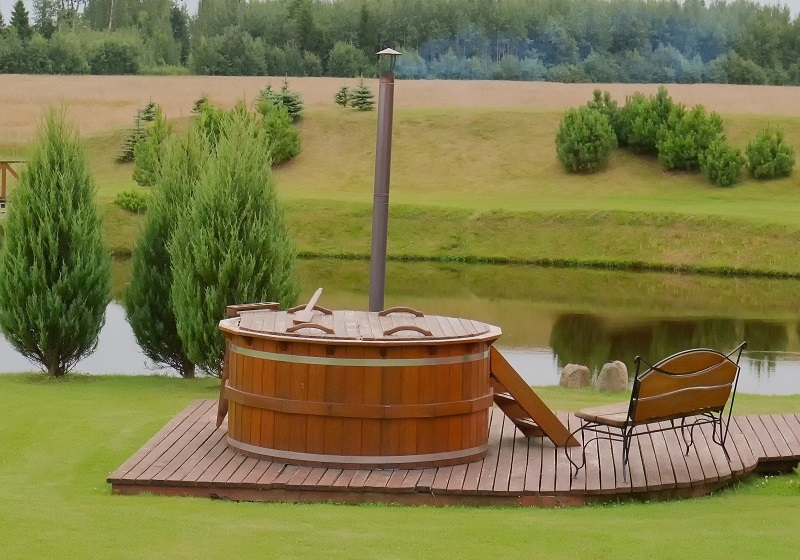Everything you need to know about hot tub decking
Published: 25/11/20 By: Mike Bekin
The classic structural foundations for a hot tub are decking boards. It’s the go-to for providing a stable and easy to maintain surface to step on as you exit the warmth and general luxury of a hot tub, while draining all the water splashed in the process. We’ve put together a guide on everything you need to know about hot tub decking.
Firstly, hot tub decking is no different than any other decking. Its purpose is to be robust enough for footfall and structural placement, as well as being durable enough to withstand changing weather conditions and frequent wetting. In particular, winter months or rainy periods which impact on the timber decking swelling or being slippery.
Some might say these weather conditions are not so important as a hot tub is predominantly used in the summer. However, if you’ve been in one, you’ll know it’s just as enjoyable on a chilly winter’s day.
Hot tub popularity
Hot tubs have become very popular in recent years. This was especially true during Covid-19 lockdown 1.0.
As summer holidays were taken off the agenda, hot tub sales, especially for inflatable hot tubs such as Lay-Z-Spa rocketed. In the early months, the cheaper alternatives were out of stock for quite some time.
The thought for many of being stuck at home throughout the summer, pathed the way to looking at the joy of spending time in the garden. The hot tub for relaxation and entertainment for the kids being at the forefront.
What to consider when building hot tub decking?
As popularity increased, so too has the need to install quality hot tub decking as the platform of choice. Decks come in all shapes and sizes. From a small square landing pad outside the back patio doors to expansive multi-tiered, multi-functional space. Often perfect for a hot tub.
There are many considerations relating to the construction of a timber deck for a hot tub. Usually, these include decking height, hot tub size, weight capacity when filled and safety issues relating to being slippery when the surface is wet.
A big one is weight load. A hot tub on decking can weigh a great deal when full. This can amount to several tonnes. This makes the structural support a vital aspect to ensure that the structure can hold the weight.
A rough guide is that a timber deck built at ground level, up to two feet off the ground, can support up to 100 lbs per square foot. This should be sufficient for most smaller scale hot tubs. If your deck is two feet or higher, you’ll need added support. The added support posts should be no more than 30 inches apart and placed in poured concrete for extra stability.
The size of your hot tub will also determine the span of the wooden frame and/or distances between posts.
Timber raised decks with high weight requirements are usually designed with the help of a structural engineer. Ideally, we suggest speaking to a TDCA recommended business. They will be able to ensure that the structure is safe and long-lasting. The last thing you want is a collapse causing damage to the hot tub or even injury to a family member.
Choose stress graded and potentially anti-slip timber for your hot tub deck
An appropriate stress graded timber should also be used within the structure. However, more and more hot tub owners are opting for anti-slip decking like our Grip-Choice decking.
anti-slip decking is often considered by many commercial holiday parks where hot tub decking is becoming a staple as part of the holiday package.
If you would like to find out more about our hot tub decking options, please get in touch. Call us on 0345 638 1340, or drop us an email at sales@ecochoice.co.uk.
Image: Venot / Shutterstock.com
